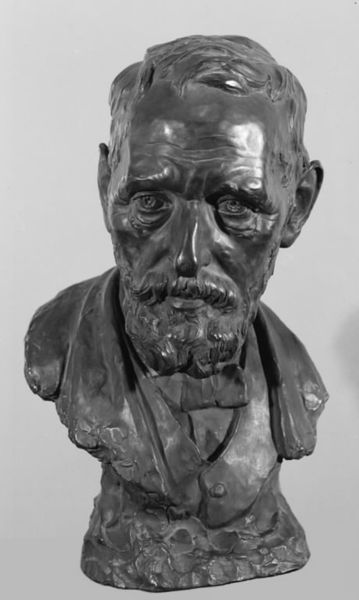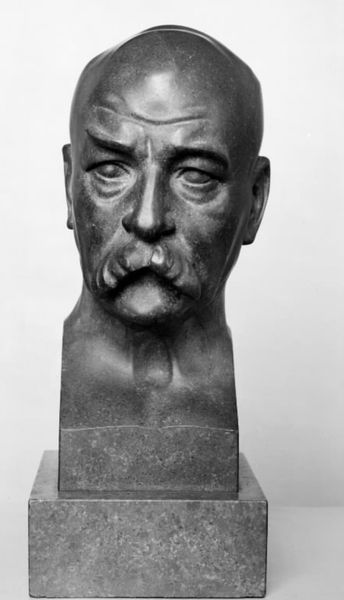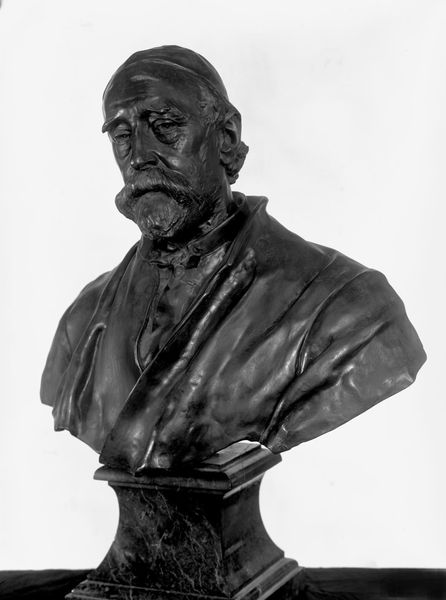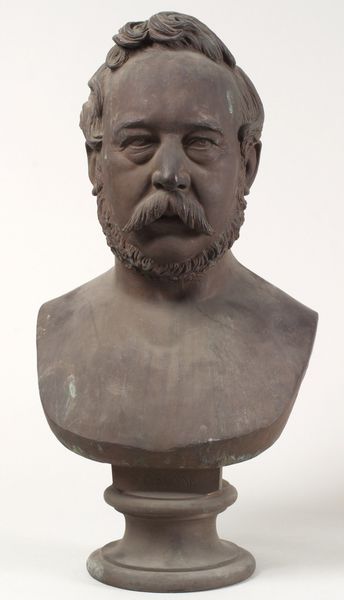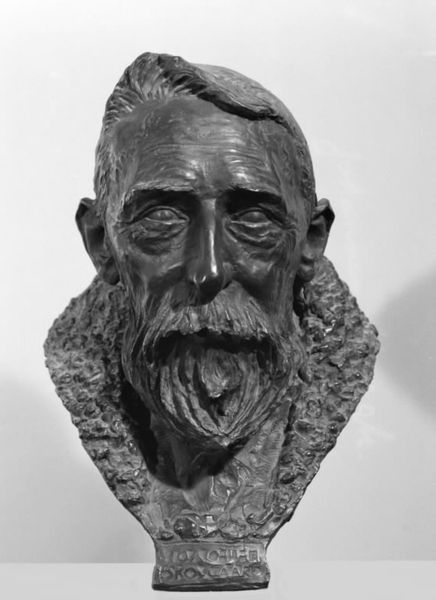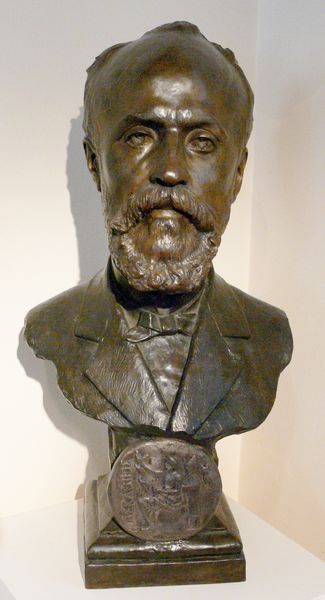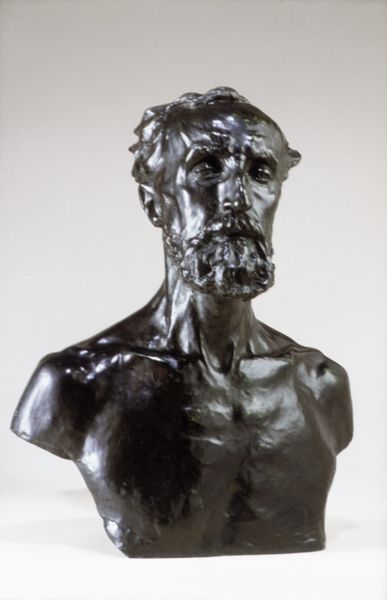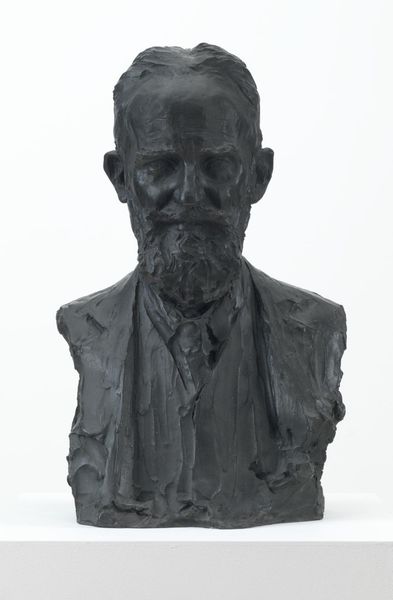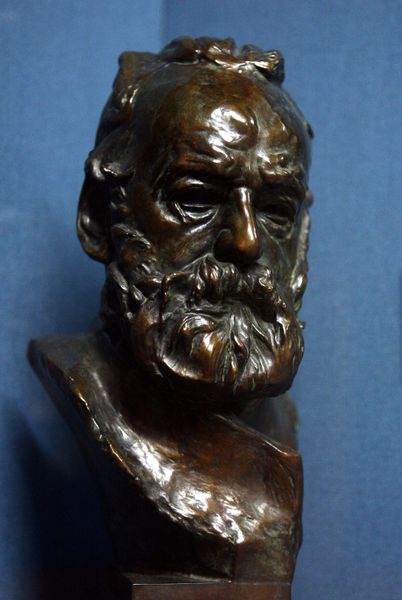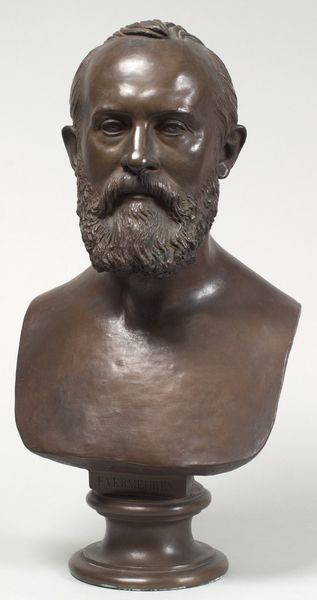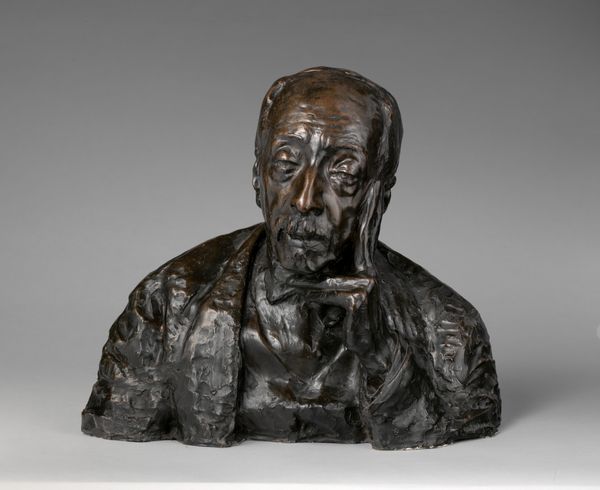
Dimensions: object: 420 x 240 x 220 mm, 15.5 kg
Copyright: CC-BY-NC-ND 4.0 DEED, Photo: Tate
Curator: Here we have Stephen Tomlin's bronze bust of Lytton Strachey, a prominent figure in the Bloomsbury Group. Editor: It’s immediately striking – that heavy, textured surface conveys such a sense of intellectual weight and quiet intensity. Curator: Tomlin, who knew Strachey, captures the essence of this influential biographer, who challenged Victorian social norms through his writings and persona. The sculpture, acquired by the Tate, reflects shifting cultural values. Editor: I'm fascinated by the materiality – the visible marks of the artist's hand in the clay before casting suggest a direct, almost urgent process. I wonder about the foundry, the labor involved in bringing this image to life. Curator: Certainly, the Bloomsbury circle, with its intricate web of relationships and aesthetic ideals, shaped both the subject and the sculptor, influencing their public reception. Editor: It's more than just a likeness. This bronze carries the weight of Strachey’s radical thinking and Tomlin's own artistic hand. Food for thought. Curator: Indeed, and a testament to the power of portraiture to encapsulate an era.
Comments
Join the conversation
Join millions of artists and users on Artera today and experience the ultimate creative platform.
tate 8 months ago
⋮
The British artist Stephen Tomlin was closely associated with the circle of writers and artists known as the Bloomsbury Group. In 1928 he married the niece of the critic and biographer Lytton Strachey (1880-1932), one of the leading figures of the Bloomsbury Group, whose book called Eminent Victorians drily exposed the hypocrisies of the Victorian era. Strachey commissioned Tomlin to make this bust, and wrote: ‘I sit all day to Tommy, who is creating what appears to me a highly impressive, repulsive, and sinister object.’ Tomlin’s portrait suggests the writer’s combination of sagacity and diffidence. Stephen Tomlin was born in 1901 in London, where he died in 1937. Gallery label, August 2004
